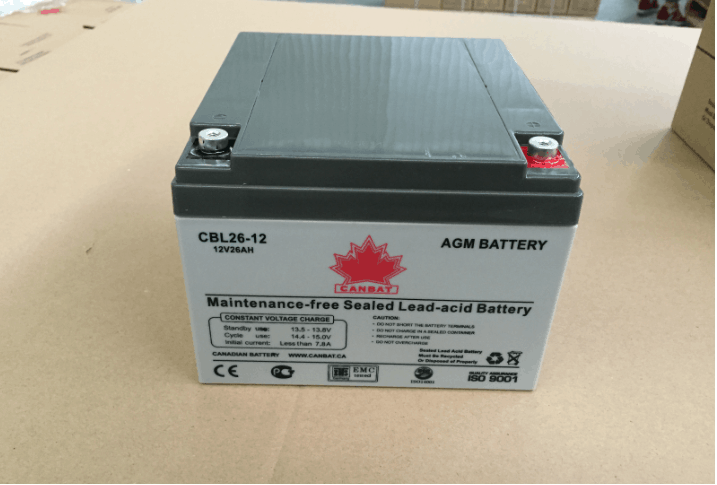Testing, monitoring RV battery is crucial and should be part of your overall RV maintenance checklist. I cant tell you how many people see early dead batteries due to faulty way of charging and due to wrong way of storing the batteries (specially in winter).
Read on to find out ways of testing, monitoring the batteries.
Testing the Batteries
There are three recommended methods of checking your RV battery. Keeping the batteries charged will help in longevity of the batteries.
Most cases the batteries are dead because of being discharged and not kept charged properly.
Testing and monitoring the batteries regularly is your best option to avoid premature battery failure. This will also help you in determining if your RV battery has gone bad or has chances of going bad in near future.
You definitely don’t want that added cost, don’t you? Lets check out the most common and easy ways to test RV or travel trailer batteries.
1.Check your monitor panel
Look at the dashboard monitor when your RV is not plugged in. Having a look at your monitor while your RV is plugged in will give you incorrect data.
Next is to check for the reading under a minor load, may be try turning on the lights in the RV for this.
2. Voltage Meter Testing
the voltage can vary; some RVs have 12 – volt batteries, whereas some have 6-volt batteries. You can turn on your voltmeter and select DC voltage.
Next is to use the voltmeter leads and touch the red one to positive and black to the negative. This will start reading the battery and show it on the display.
The 12-volt battery should read between 12.5 and 12.7, and the 6-volt battery should read anything between 6.25 and 6.37 volts. A fully charged 12 V battery reads at 12.73 V and 6 V battery actually has to be 6.37V.
A battery need to be charged if the battery has dischrged 80% that can be around 12.50 for 12 V battery and 6.25 V for 6 V battery
3.Testing using specific gravity Method.
This is the best method to check if the battery is fully charged or not. In this method you have to check specific gravity of each cells in the battery.
With discharging the sulfuric acid content of electrolyte solution is decreased which means only water is left. Thus with discharged the specific gravity also decreases.
This method is basically testing the ratio of density of electrolyte versus the water. With higher acid content in battery, the specific gravity will be higher. Lets see how to do the testing using this method.
Firstly you want to put on protective gloves for this method. Remove the vent cap and check the electrolyte levels in each cell.
Before taking a reading, fill a hydrometer and drain it twice for each cell.
Using the hydrometer, test the electrolyte level from a cell and then tap the water back into its own cell. The specific gravity reading for each cell has to be between 1.23 to 1.28.
You need to charge the battery if the average reading of all cells fall below 1.28. Having bigger difference between the highest and lowest reading of the cells may mean the batteries have probably gone bad and will need replacement.
RV Battery wont hold charge
There could be multiple reasons for your RV battery, not holding its charge. Here are a couple of reasons this could be the case.
- Blown fuses
- tripped circuits breakers
- Loose or corroded connections on your power converter.
- Broken connections
- Converter batteries have inline fuses that have blown.
RV Battery Charging
Battery not charging is a common issue that we see so often. Overcharging, or undercharging the batteries leads to such issues over an extended period of time.
There are four ways you can go about charging your RVs battery. One can charge the battery through a converter.
You can hook up the electrical grid via a 30 or 50 amp outlet.
Read : Troubleshooting a RV battery that wont charge
You can hook up to shore power with any home extension cord, in the same manner, you would hook up a 30 amp or 5amp plug.
A Generators can be used through your battery, more than often the generators plugin the same way as to shore power.
Here is the charge level at different % for both 6V and 12 V batteries. Remember as well already saw 12 V batteries when charged shows more than 12V. Check the table below.
| % Charge | 12 Volts | 6 Volts |
| 100% | 12.73 V | 6.37 V |
| 90% | 12.62 V | 6.31 V |
| 80% | 12.50 V | 6.25 V |
| 70% | 12.37 V | 6.19 V |
| 60% | 12.24 V | 6.12 V |
| 50% | 12.10 V | 6.05 V |
When you charge an RV battery, it goes through three stages, the bulk stage, the absorption phase, and the float phase.
Bulk charging phase
The first stage of a battery charging is called the bulk charge. When a battery is a bulk charging, it sends currents to the battery at a maximum but safe rate until the voltage reaches around 80% to 90%. The volts at this stage generally read between 10.5 volts to 15 volts.
Absorption charging phase
The absorption phase is the second phase in the sequence. In the absorption phase, the voltage remains constant, and the current gradually fades as the internal resistance increases during the charging process. The voltage at this stage is typically around 14.2 to 15.5 volts.
Float charging phase
Float charging phase is the third stage in the charging process. After the battery is full and typically reads around 12.8 volts, the charging voltage is reduced to lower levels to minimize gassing and to prolong the battery life.
Monitoring RV Battery
Monitoring your battery is very important, especially if you like to go camping or take the RV for a trip frequently. Batteries last their longest if they are never cycled below 50% and if it is not drained more than 80%. There are a few ways of monitoring your battery.
Voltage Metering
A voltage meter is the most straightforward way of keeping an eye on your battery. A fully charged 12V battery will read as 12.73V at a 50% capacity rate at 12.10V.
You know you have 20% leftover if the meter reads 11.66 volts. Here’s a big tip, to get the most accurate voltage reading, you must let your battery idle for a minimum of six hours but preferably for twenty-four hours.
What this entails that the lights must not be on, the charger must not be connected, and there must be no solar devices running at all. If the electrical currents are being used when running these tests, your readings will not be accurate.
Gravity Testing
Gravity testing is another accurate method for testing your rested batteries. It proves the state of the charge by using hydrometer to measure the precise gravity of each battery cell. This involves battery acid being sucked up through a tube.
Battery Monitor
A battery monitor measures the current flowing to and back from the battery through a right shunt.
One monitor looks if the battery is fully charged, it then keeps track of every amp outflow and thus gives you the remaining percentage reading. These monitors are not cheap but worth it. There are a few options in the market which include and should be easy to find, which are as follow.
- TriMetric TM – 2020
- Bluesky IPM – Pro Remote
- Xantrex battery monitor
- Magnum Energy Battery monitor
- OutBack power system
- Xantrex Link 10
- Xantrex LINKlight
Maintaining the Batteries
While testing and monitoring the batteries in itself is a best maintenance tips, there are may other things to do.
The whole maintenance process on batteries is to makes sure they last long (on average the batteries on RVs last 4-6 years). But, they can prematurely fail if the care is not taken.
The maintenance of your RV battery will depend on the type of battery you have to an extent.
As mentioned in the beginning, lithium batteries require less maintenance than that of a lead acid battery. The best way to know how to maintain your battery is to chat with the professionals at the manufacturers of your battery.
Read : 5 Best Lithium batteries for RV
Here are a couple of things you can check to ensure your battery is maintained.
Electrolyte levels in a flooded battery cell.
A flooded battery cell losses water with each charge cycle; this means the water needs to be refilled. You have to check the water level in the battery. Distilled water is recommended as it helps reduce the chances of sulfating.
It also limits the possibilities of sulfate crystals forming, which can occur when battery plates are exposed to air. Check these at least once a month and make sure the battery is fully charged before starting any maintenance.
Cleaning your battery terminal
Cleaning your battery terminal removes any corrosion that builds up. You can clean it by using a cup of baking soda and a gallon of water if you do not have battery contact cleaning products, You can use a toothbrush to scrub.
Low charged batteries and sulfating
If you let your battery run too low, it can increase the chances of the battery sulfating. If the battery is less than 80% of reads at 12.4 volts, then you can expect some sulfating to occur.
Charge often
Charging your battery essentially keeps it alive. Charging your battery every day to 50% can double its lifespan. Keep in mind that overcharging your battery is also wrong and can result in hot temperatures that can have a negative effect on the battery in time.
Storing the Batteries
Storing your battery in an appropriate manner is vital. Besides regular maintenance, which is also very important, your battery storage needs to be adequate for the proper level of protection and longevity. This is specially for winters when the RV goes in for storage for extended period of time.
If you do not store your batteries properly, they can freeze over or overheat, resulting in a damaged battery and will probably need replacement. Here is what you can do to store your battery during the no travel season appropriately.
- Firstly, remove any corrosion as this will prevent any potential discharge pathways.
- You can clean the terminal with a wire brush and remove marks or signs of corrosion.
- If you are keeping the battery in a vehicle, it is essential to disconnect the battery to avoid self-discharge due to parasitic loads such as ground faults.
- Charge your battery to its full capacity before storing it.
- If you are lucky enough to own a battery with a removable vent cap, then you should have a look at the electrolyte levels in each cell. If it is needed to top up, the electrolyte levels make sure to charge the battery first.
- Keep your battery above 75% at all times; you can check it once a month or every 90 days.
- Your battery needs to be stored in a dry and cool place with a temperature no lower than 32 and not any higher than 80.
- You do not want to allow your battery to freeze; if it has, then do not attempt to charge it as it could explode.
- Do not leave the battery on a triple charge for longer than 48 hours as it can really damage the battery and affect its longevity.
Comparing Battery Types For charging, Maintenance
There are two types of batteries that are most commonly used in RVs. Each of these have their own pros and cons. You need to decide depending on the usage.
Deep Cycle Batteries
Deep cycle batteries are apart of lead-acid battery types. These are similar to boat or golf cart batteries.
Deep cycle batteries produce a steady flow of current over a very long period of time. Deep cycle batteries have many subtypes, which include but are not limited to wet cell batteries, absorbed glass mat (AGM) batteries as well as gel type batteries.
AGM batteries are recombinant. This means that oxygen and hydrogen recombine inside the battery.
AGMs use gas phases to transfer oxygen to the negative plates and then to recombine them back into the water. This all happens while charging and prevents any loss of water through electrolysis.
Lithium batteries
Lithium batteries are an excellent alternative to Deep cycle batteries or lead-acid batteries. Most RVs that use solar change over to lithium batteries.
Lithium batteries offer a variety of beneficial qualities such as being lighter in weight, they are smaller, and they do not require the same maintenance as the lead-acid batteries do.
The maintenance refers to, for example, having to check electrolyte levels, which are not necessary for lithium batteries.
Lithium batteries have a fantastic lifespan and have a typical rare of 5 000 cycles where lead acid batteries only have 400 cycles.
In Conclusion
To conclude, RV batteries have a life of their own and need to be taken care of if you want them to take you far on your trip. There are many things to keep in mind, such as the maintenance, storing off your battery, avoiding overcharging, undercharging and and monitoring your battery.
The article has provided a vast range of information, but you can always find out more from contacting manufacturers directly. Have a look at more of our pieces with regards to any questions you may have on living the best RV life.





